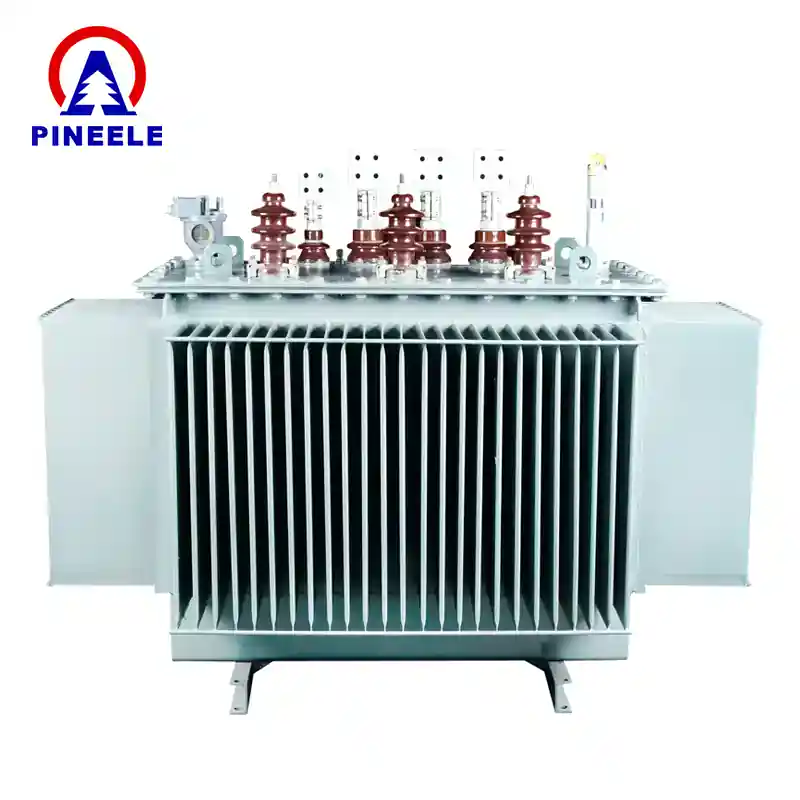A transformer is a passive electrical device that transfers energy between circuits through electromagnetic induction, enabling voltage step-up or step-down functions without a direct conductive path Wikipedia. A 15 kVA three-phase transformer is rated to handle up to 15 kilovolt-amperes of apparent power across three phases, making it suitable for small to medium-sized power distribution tasks. Unlike single-phase units, three-phase transformers deliver more stable power with lower current per winding, improving efficiency and reducing conductor size requirements.

Applications and Typical Use Cases
15 kVA three-phase transformers serve a wide array of industries and facilities where reliable mid-level power conversion is needed:
- Commercial Buildings: Support lighting, HVAC systems, and office equipment in small shopping centers or multi-story office blocks.
- Light Industrial Workshops: Power machining tools, conveyor belts, and motor control centers in woodworking or metal-fabrication shops.
- Renewable Energy Integration: Step up or down voltages in small solar farms or wind-turbine installations before feeding into the grid.
- Data Centers & Telecom Clusters: Provide isolation and voltage stabilization for server racks, UPS systems, and telecom switching gear.
These applications benefit from the compact footprint and relatively low cost of a 15 kVA unit compared to larger power transformers, while still delivering three-phase stability and galvanic isolation where required Wikipedia.
Market Trends and Industry Background
The global transformer market has seen steady growth, driven by rapid electrification and renewable-energy integration:
- Between 2017–18 and 2021–22, transformer production capacity grew at a CAGR of 7.6 %, buoyed by distribution-level installations in emerging markets .
- High-voltage direct-current (HVDC) infrastructure expansion has accelerated demand for specialized transformers, with HVDC capacity registering an 8.3 % CAGR in the same .
- According to IEEMA, the Indian electrical and allied electronics industry—which includes transformer manufacturing—accounts for 7.2 % of total manufacturing GDP and has grown at roughly 9.5 % CAGR over five years .
Emerging trends include demand for energy-efficient designs compliant with DOE 2016 standards, miniature “compact substation” modules for urban grids, and smart transformers enabled with monitoring sensors for predictive maintenance.
Technical Specifications and Price Overview
A typical 15 kVA three-phase dry-type transformer for 480 V Δ → 208Y/120 V service might feature:
| Parâmetro | Typical Value |
|---|---|
| Potência nominal | 15 kVA |
| Tensão primária | 480 V Δ |
| Tensão secundária | 208Y/120 V |
| Frequency | 60 Hz |
| Insulation Class | 150 °C |
| Gabinete | NEMA 3R ventilated (indoor/outdoor) |
| Efficiency | ≥ 97 % at full load (DOE 2016) |
| Conformidade com os padrões | IEEE C57.12.01, ANSI C57.12.00 |
| Peso | ~ 200–250 lbs (90–115 kg) |
Price Range (USD)
- Budget models: $895 – $1,000 (e.g., Square D 15 kVA)
- Mid-range: $1,000 – $1,500 (e.g., Hammond Power)
- Premium/specialty: $2,200 – $2,300 (e.g., Phoenix Phase Converters)
- Bulk factory-direct: $950 – $1,000 on platforms like Alibaba (min. order 1 unit)
- Refurbished options: Often available around $800 – $900 for reconditioned units with warranty
Actual pricing depends on factors such as custom tap configurations, ruggedized enclosures, testing certificationse regional logistics.
Key Differences from Similar Transformer Types
- Dry-Type vs. Oil-Filled
- Dry-Type: Lower maintenance, safer indoors, no fire risk from insulating oil.
- Oil-Filled: Higher overload capacity, better heat dissipation, but requires fire-safe containment and periodic oil testing.
- Isolation vs. Auto-Transformer
- Isolation Transformer: Provides galvanic isolation between circuits, essential for sensitive electronics.
- Auto-Transformer: Shares windings between primary and secondary, more compact but no isolation.
- Standard vs. Energy-Efficient
- Standard Units: Meet basic ANSI/IEEE efficiency thresholds.
- High-Efficiency Models: Exceed DOE 2016 requirements, reduce losses and operating costs over time.
Selecting the right type hinges on safety requirements, environmental conditionse lifecycle cost considerations.
Buying Recommendations and Selection Guidance
When procuring a 15 kVA three-phase transformer guide, consider the following:
- Voltage and Phase Compatibility: Ensure primary and secondary voltages match system requirements and phase orientation (Δ or Y).
- Efficiency Class: Opt for DOE 2016-compliant or higher units to lower energy losses and qualify for rebates.
- Environmental Ratings: Choose an enclosure rating (NEMA 1, 3R, or 12) aligned with indoor/outdoor placement and exposure.
- Customization Needs: If you need special taps, surge protection, or noise-reduction features, confirm factory capabilities.
- Manufacturer Reputation: Trusted brands like ABB, Schneider Electrice Eaton often provide superior testing, warranty, and support.
- Total Cost of Ownership: Factor in shipping, installation, maintenance, and expected loss-reduction savings over the transformer’s life.
Engage local distributors early to discuss lead times, on-site testing servicese after-sales support.
Perguntas frequentes (FAQ)
A1: Major cost drivers include voltage class, enclosure type, efficiency rating, customization (taps, surge arresters), and compliance testing (e.g., UL, IEEE). Bulk orders and refurbished units can yield significant savings.
A2: Yes—by using only one leg of the secondary winding, but this underutilizes capacity and can lead to unbalanced loading. For mixed loads, consider a dedicated single-phase transformer or an auto-transformer arrangement for optimal performance.
A3: Dry-type transformers require minimal maintenance: routine visual inspections, dust removal, verification of tight connections, and temperature monitoring. Unlike oil-filled units, there’s no need for oil sampling or leakage checks.
Conclusion
A 15 kVA three-phase transformer is a versatile workhorse for mid-range power distribution guide across commercial, industrial, and renewable-energy applications. Understanding core specifications, market trends—such as sustained 7.6 % CAGR growth—and price dynamics (from $895 para $2,300+ USD) empowers you to make informed procurement decisions. By aligning transformer type, efficiency class, and environmental ratings with your site requirements, you’ll optimize both upfront investment and lifecycle performance, ensuring reliable power delivery for years to come.